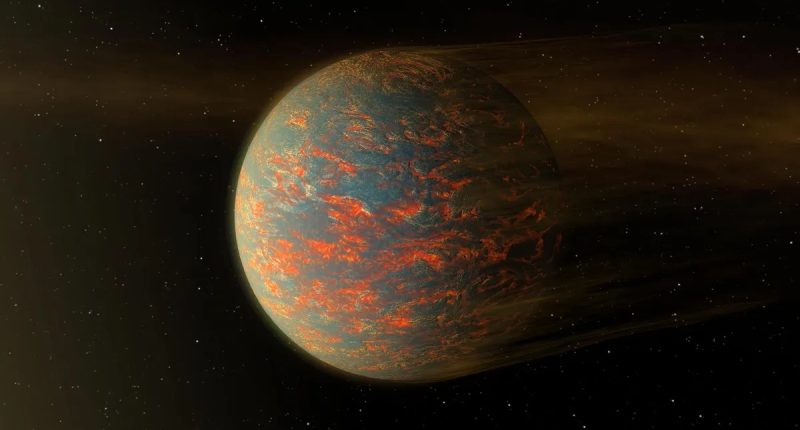A PLANET that is so hot in temperature it’s been dubbed hellish has been giving off strange signals for almost two decades and has scientists looking for an answer.
The planet, 55 Cancri e, is devilishly hot and gets up to 4,400 degrees Fahrenheit during the day.
It cools down to around 2,060 degrees Fahrenheit at night time.
55 Cancri e was discovered in 2004 and has been involved in unexplainable events since.
The temperature is so hot because it is extremely close to its parent star.
55 Cancri e is less than 2% in distance from its parent star compared to the Earth and the Sun.
It is able to make an orbit in just 17 hours.
55 Cancri e, is dubbed a super-Earth due to it being eight times bigger than our planet and is 44 light years away.
STRANGE SIGNALS
A strange signal it gives off is it will change the strength of light that it emits from very strong to weak.
A study published in the Astrophysical Journal Letters in September suggests that the signals are non-consistent because 55 Cancri e does not have a lasting atmosphere.
Most read in News Tech
The study believes that the planet has volcanoes that go off frequently and form a gas that creates a short-lived atmosphere – but it burns away quickly.
It has been suggested that the planet being so close to its parent star might be causing strange and unexplainable events.
The planet is left bare when the atmosphere burns up which could be causing the inconsistent light signals.
It has been hard for scientists to pinpoint exactly what is occurring on 55 Cancri e due to it being so far away.
POSSIBLE ANSWER
But now scientists believe they will be able to solve the mystery once and for all due to NASA’s James Webb Space Telescope.
The James Webb Space Telescope not only can get images at extremely far distances, but it can also take infrared ones.
Inafred photos will help scientists track the light signals and compare them to when the atmosphere burns up.










